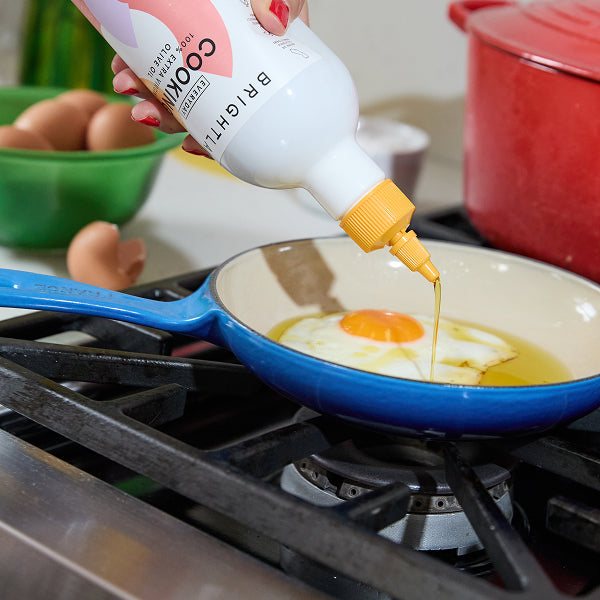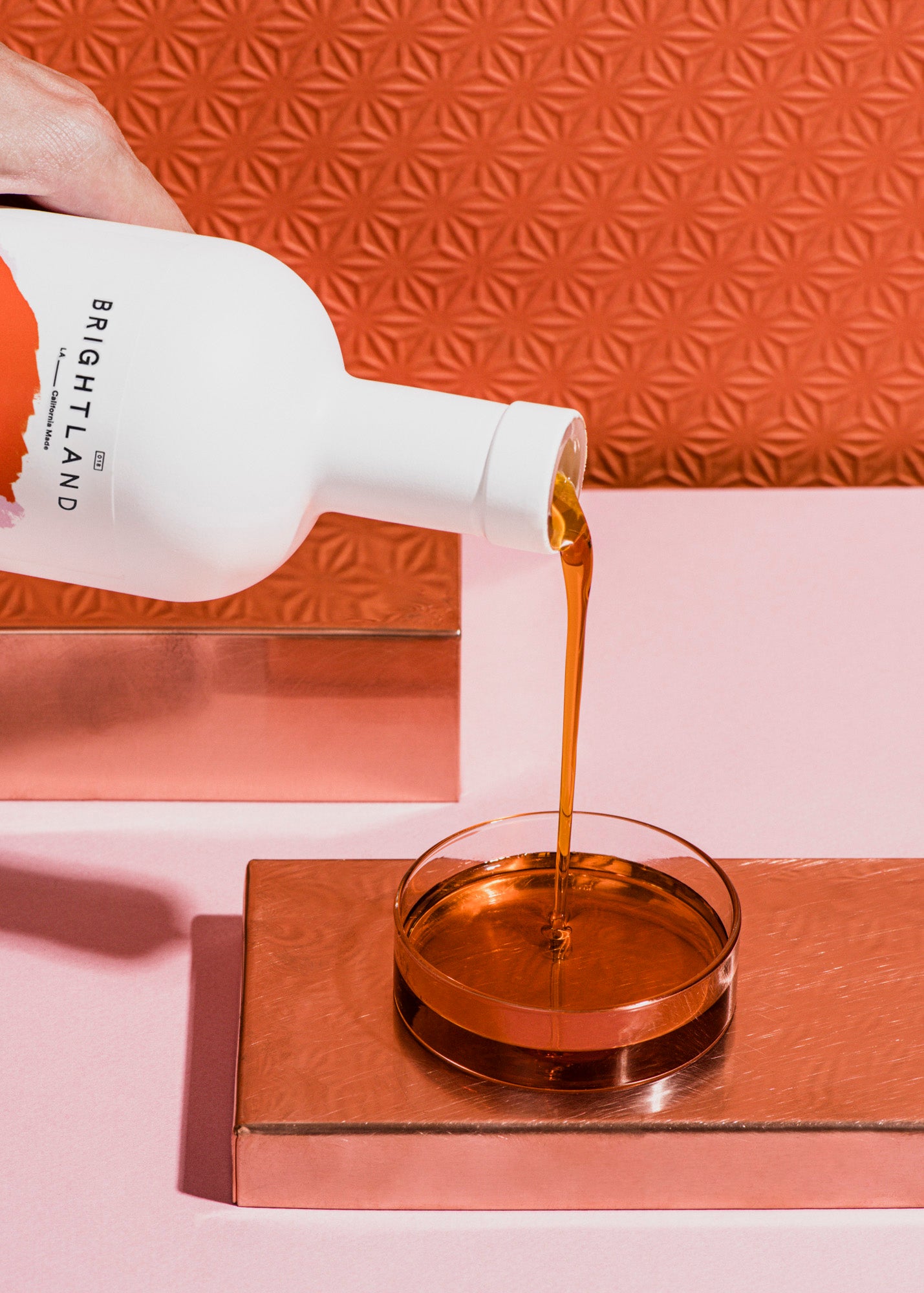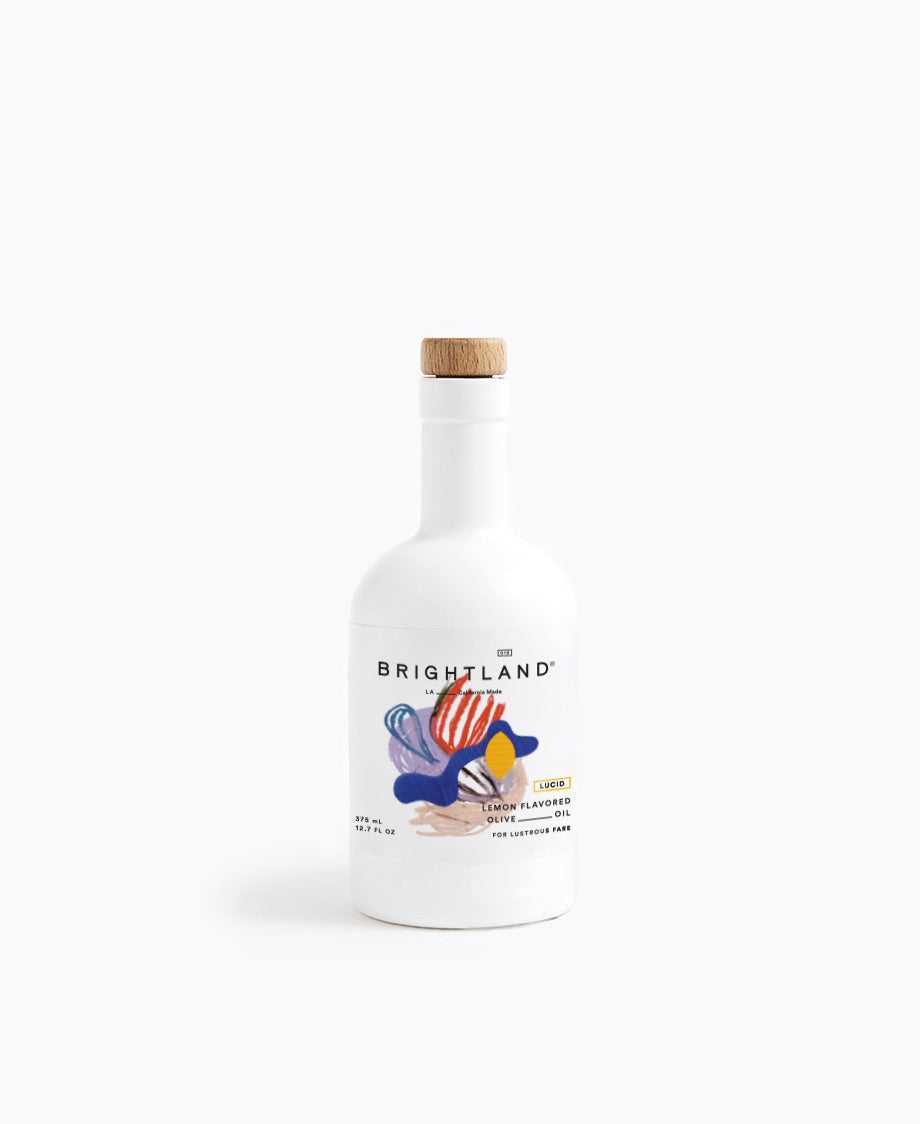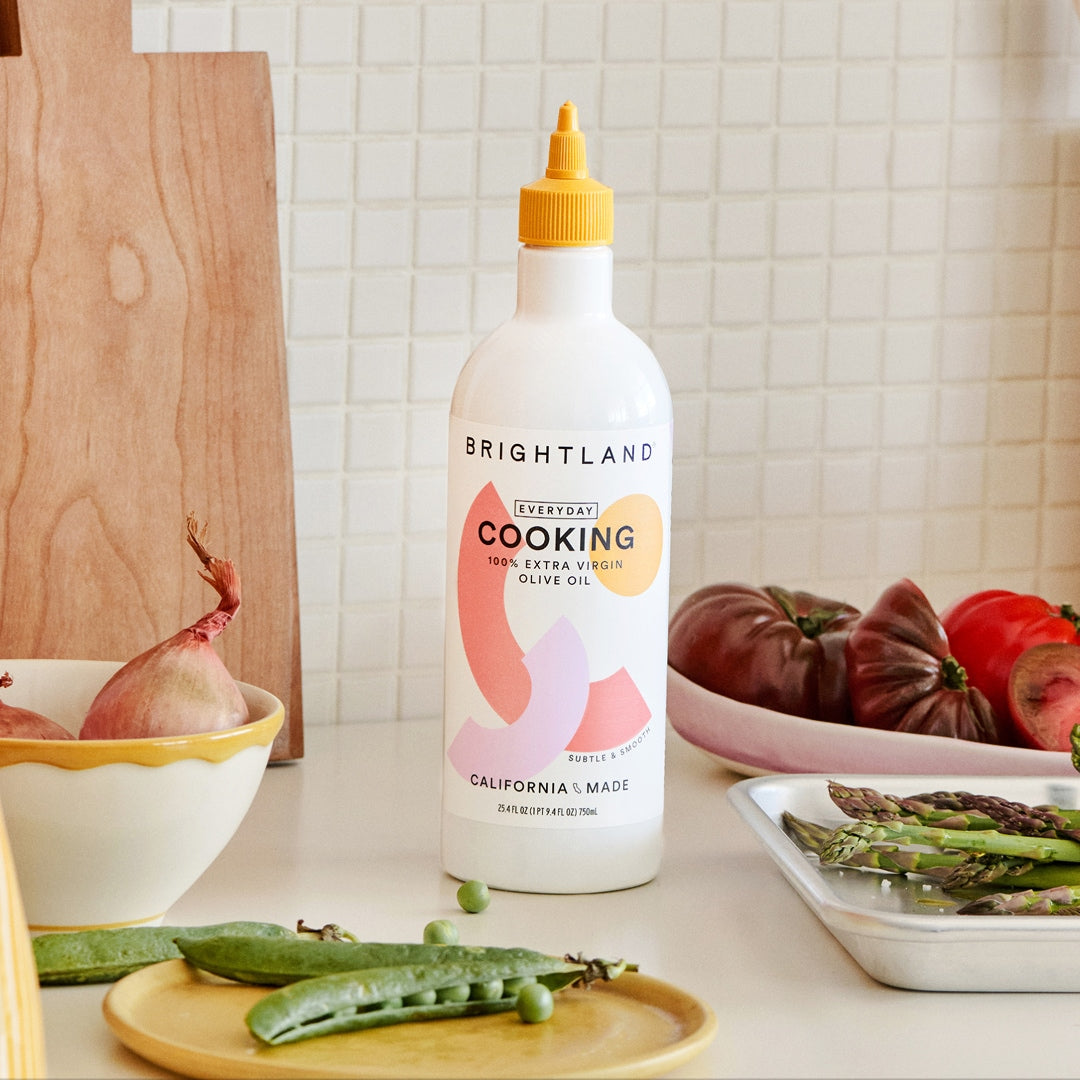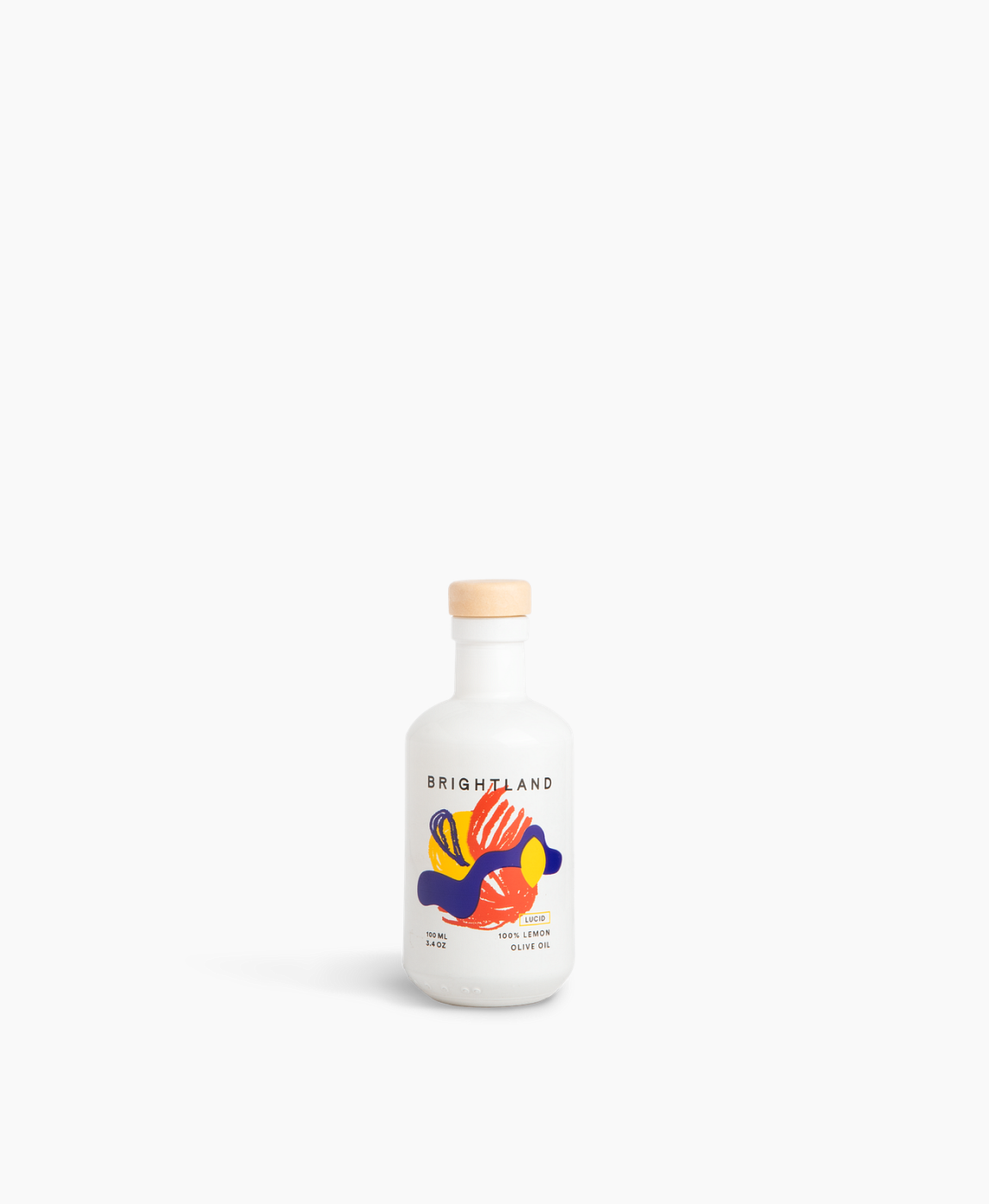Find the good stuff
How to Spot Fake Olive Oil
It's a key ingredient in any pantry, but olive oil is actually one of the most frequently faked, mislabeled, and adulterated food products worldwide. Know what to look for (and what to avoid) the next time you restock.
Shop Brightland OilsWhat's in the bottle?
Real extra virgin olive oil is prized for its fruity, grassy flavor and high antioxidant content. High demand and complex supply chains make it especially vulnerable to cost-cutting practices like mixing in cheaper, lower-quality, or even rancid oils. As a result, it's not uncommon for "extra virgin" olive oil to end up tasting waxy, grubby, or like nothing at all.
Shop OilsAll in the details
Look for labels with specifics about the olives—not just the country, but the region, the specific olive varietal used, unique tasting notes, harvest date and so on. The more specific the information, the less likely it is that the oil has been diluted.
Keep in mind: while the Mediterranean is the birthplace of olive oil, quality olive oils are now also grown and produced in places like Argentina, Chile, and right here in California.
Trust your tongue
Mislabeled extra virgin olive oil will reveal itself with a simple taste test. Fake EVOO will taste dull or greasy from filler oils, and even waxy or crayon-like if they have begun to go rancid. Fresh, authentic olive oil will have a bright and grassy flavor with a peppery bite from polyphenols.
Shop OilsWords matter
Be wary of meaningless terms like first cold-press (something true of all extra virgin olive oils). And remember: light, pure, and refined refer to heavy processing that removes flavor and nutrients.
Instead, focus on looking forextra virginon the label—unlike other common phrases, this designation has specific requirements around key indicators of quality.
Antioxidant Loaded
Anti-Inflammatory
Gut Health + Digestion
Brain Activating
Heart Healthy
Antioxidant Loaded
Anti-Inflammatory
Gut Health + Digestion
Brain Activating
Heart Healthy
Antioxidant Loaded
Anti-Inflammatory
Gut Health + Digestion
Brain Activating
Heart Healthy
Antioxidant Loaded
Anti-Inflammatory
Gut Health + Digestion
Brain Activating
Heart Healthy
Antioxidant Loaded
Anti-Inflammatory
Gut Health + Digestion
Brain Activating
Heart Healthy
Antioxidant Loaded
Anti-Inflammatory
Gut Health + Digestion
Brain Activating
Heart Healthy
Antioxidant Loaded
Anti-Inflammatory
Gut Health + Digestion
Brain Activating
Heart Healthy
Antioxidant Loaded
Anti-Inflammatory
Gut Health + Digestion
Brain Activating
Heart Healthy
Antioxidant Loaded
Anti-Inflammatory
Gut Health + Digestion
Brain Activating
Heart Healthy
Antioxidant Loaded
Anti-Inflammatory
Gut Health + Digestion
Brain Activating
Heart Healthy
Antioxidant Loaded
Anti-Inflammatory
Gut Health + Digestion
Brain Activating
Heart Healthy
Antioxidant Loaded
Anti-Inflammatory
Gut Health + Digestion
Brain Activating
Heart Healthy
Antioxidant Loaded
Anti-Inflammatory
Gut Health + Digestion
Brain Activating
Heart Healthy
Antioxidant Loaded
Anti-Inflammatory
Gut Health + Digestion
Brain Activating
Heart Healthy
Antioxidant Loaded
Anti-Inflammatory
Gut Health + Digestion
Brain Activating
Heart Healthy
Antioxidant Loaded
Anti-Inflammatory
Gut Health + Digestion
Brain Activating
Heart Healthy
Antioxidant Loaded
Anti-Inflammatory
Gut Health + Digestion
Brain Activating
Heart Healthy
Antioxidant Loaded
Anti-Inflammatory
Gut Health + Digestion
Brain Activating
Heart Healthy
Antioxidant Loaded
Anti-Inflammatory
Gut Health + Digestion
Brain Activating
Heart Healthy
Antioxidant Loaded
Anti-Inflammatory
Gut Health + Digestion
Brain Activating
Heart Healthy
Keys to Quality

Bottles
Look for bottles made of UV-protected glass (like Brightland) or stainless steel that protect the olive oil from enemies of freshness - light and air.

Words
Look for extra virgin on the label, and be wary of meaningless terms like first cold-press. Light, pure, and refined refer to processing that removes flavor and nutrients.

Harvest
A Harvest Date on your bottle is a key indicator of transparency and quality. Brightland oils are all currently from the Nov. 2023 Harvest.
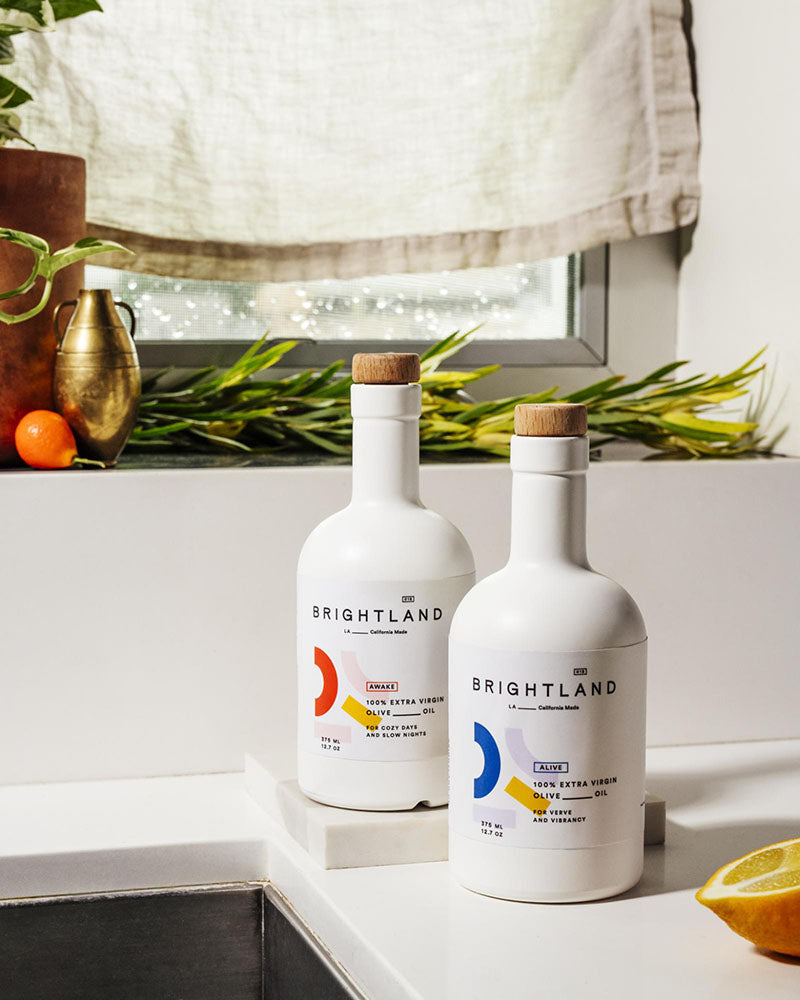
Our Oils
Brightland makes artfully and consciously-crafted olive oils, vinegars and honeys that infuse the everyday with a little bit of happiness.


